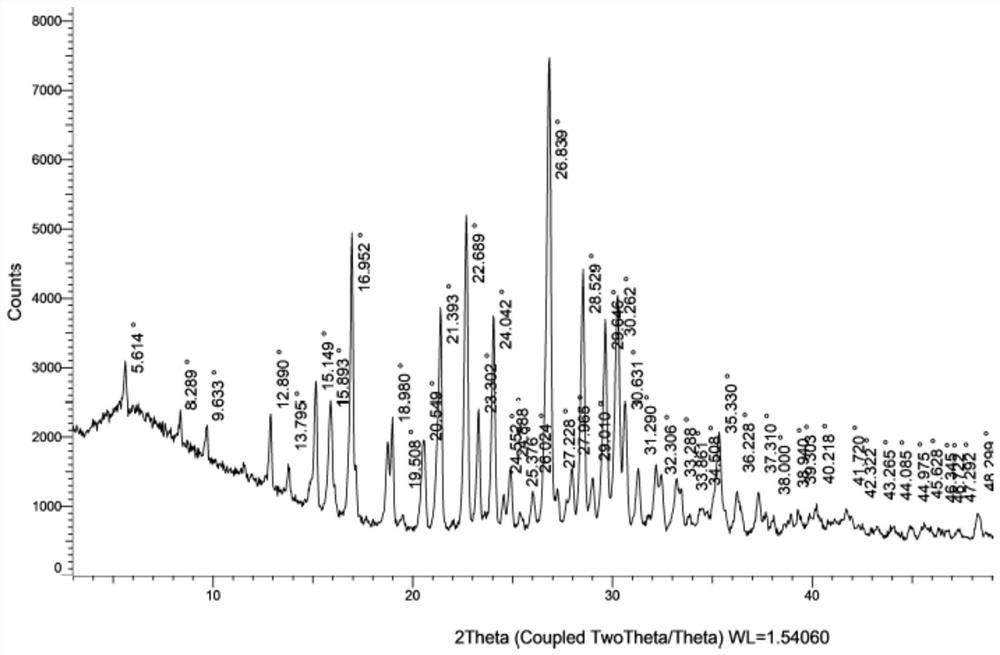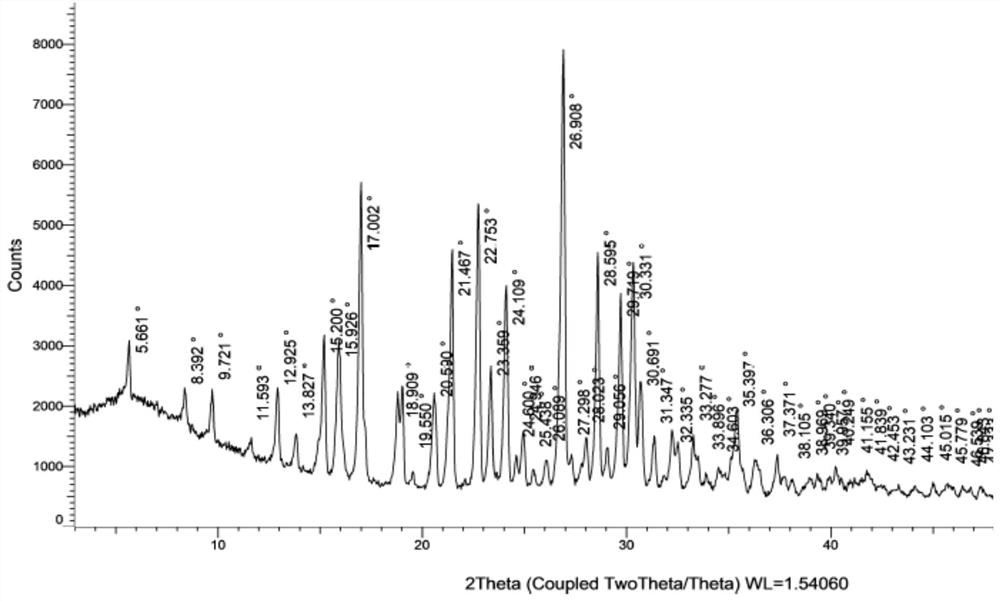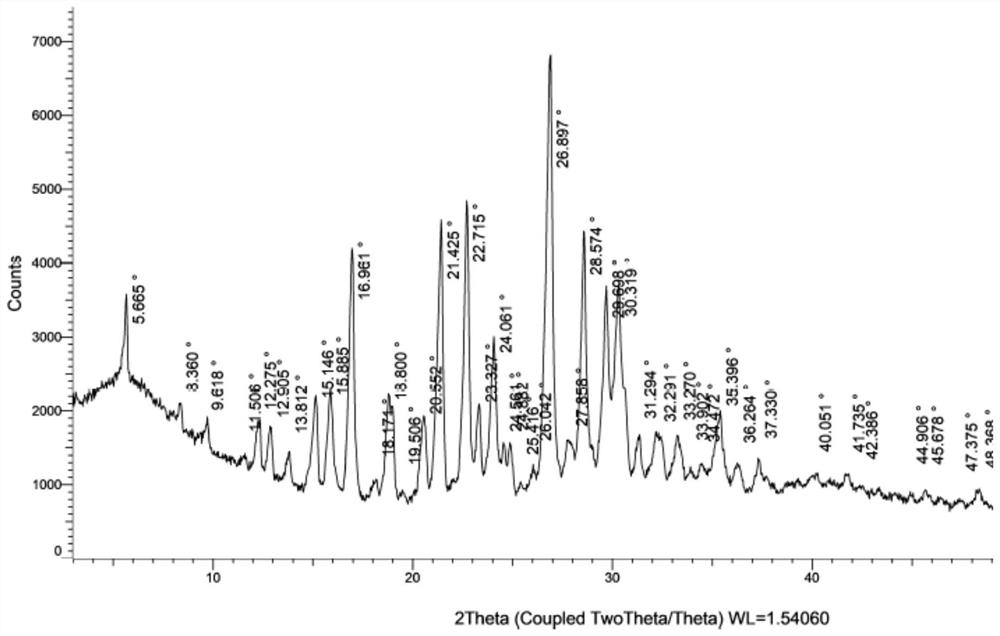N4-hydroxycytidine monohydrochloride and crystal form C thereof, and preparation method and application of N4-hydroxycytidine monohydrochloride
A technology of hydroxycytidine monohydrochloride and hydroxycytidine, which is applied in the field of medicine and chemical industry, can solve the problems such as the related reports on the research of polymorphism, crystalline hydrate and its salt base that have not been found, and achieve good stability and finished medicine. sexual effect
- Summary
- Abstract
- Description
- Claims
- Application Information
AI Technical Summary
Problems solved by technology
Method used
Image
Examples
Embodiment 1
[0045] Add N4-hydroxycytidine (5.18g, 20mmol) and 50mL of water in sequence in the reaction flask, start stirring, add 2.0M hydrochloric acid (11mL, 1.1eq) dropwise, react at 20-30°C for 2-4 hours, and depressurize Distill until no droplets are produced. Add 105mL of ethanol to the above reaction bottle, gradually raise the temperature to 45-55°C until it completely dissolves, then slowly cool down to room temperature, the solution becomes turbid, continue to cool down to 0-5°C, fully crystallize for 2-4 hours, filter, and filter the cake with cold water Washed with ethanol and dried in vacuum to obtain 3.55 g of white crystalline powder of N4-hydroxycytidine monohydrochloride, with a molar yield of 60.3%. X-ray powder diffraction (XRPD) as figure 1 Shown; Differential scanning calorimetry and thermogravimetric analysis curve (DSC-TGA) such as figure 2 shown.
Embodiment 2
[0047] Add N4-hydroxycytidine (5.18g, 20mmol) and 50mL of water in sequence in the reaction flask, start stirring, add 2.0M hydrochloric acid (11mL, 1.1eq) dropwise, react at 20-30°C for 2-4 hours, and depressurize Distill until no droplets are produced. Add 105mL of methanol to the above reaction bottle, gradually raise the temperature to 45-55°C until it completely dissolves, slowly cool down to room temperature, the solution appears cloudy, continue to cool down to 0-5°C, fully crystallize for 2-4 hours, filter, and filter the cake with cold water Washing with methanol and drying in vacuo gave 3.25 g of white crystalline powder of N4-hydroxycytidine monohydrochloride with a molar yield of 55.0%. X-ray powder diffraction (XRPD) as image 3 shown.
Embodiment 3
[0049] Add N4-hydroxycytidine (5.18g, 20mmol) and 50mL of water in sequence in the reaction flask, start stirring, add 2.0M hydrochloric acid (11mL, 1.1eq) dropwise, react at 20-30°C for 2-4 hours, and depressurize Distill until no droplets are produced. Add 105mL of isopropanol to the above reaction bottle, gradually raise the temperature to 45-55°C until it completely dissolves, slowly cool down to room temperature, the solution becomes turbid, continue to cool down to 0-5°C, fully crystallize for 2-4 hours, filter, filter cake Wash with cold isopropanol and dry in vacuum to obtain 3.37 g of white crystalline powder of N4-hydroxycytidine monohydrochloride, with a molar yield of 57.0%. X-ray powder diffraction (XRPD) as Figure 4 shown.
PUM
 Login to View More
Login to View More Abstract
Description
Claims
Application Information
 Login to View More
Login to View More - R&D
- Intellectual Property
- Life Sciences
- Materials
- Tech Scout
- Unparalleled Data Quality
- Higher Quality Content
- 60% Fewer Hallucinations
Browse by: Latest US Patents, China's latest patents, Technical Efficacy Thesaurus, Application Domain, Technology Topic, Popular Technical Reports.
© 2025 PatSnap. All rights reserved.Legal|Privacy policy|Modern Slavery Act Transparency Statement|Sitemap|About US| Contact US: help@patsnap.com



